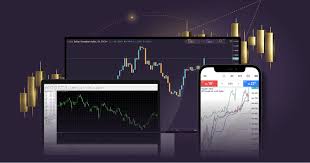MetaTrader 4 (MT4) is one of the most popular trading platforms among Forex traders, thanks to its robust features and user-friendly interface. A key to mastering Forex trading lies in understanding how to read and analyze Forex charts on MT4 effectively. These charts provide an essential glimpse into price movements and trends, enabling traders to make informed decisions. This blog will walk you through the basics of reading Forex charts on mt4 trading platform and how to analyze them for success.
Step 1: Access the Charts Panel on MT4
When you open MT4, Forex charts are your starting point. To view them, select the currency pair of interest from the “Market Watch” window. Right-click on the pair and choose “Chart Window.” The selected currency pair’s chart will load immediately.
MT4 provides three types of charts:
• Line Chart – Tracks closing prices over specific periods.
• Bar Chart – Displays opening, high, low, and closing prices for each time interval.
• Candlestick Chart – A more visual chart style preferred by most traders for its detailed depiction of price movements.
Choose the chart style you’re most comfortable with using the toolbar at the top of the screen.
Step 2: Select Timeframes
Timeframes in MT4 help traders observe price movements over specific periods, from one minute to one month. A shorter timeframe, like M1 or M5, is ideal for scalpers focusing on quick trades. Longer timeframes, such as H1, H4, or Daily, suit swing traders examining overarching trends.
To switch timeframes, use the toolbar options or right-click on the chart, select “Timeframes,” and choose accordingly. Always select the timeframe that matches your trading strategy.
Step 3: Add Technical Indicators
Technical indicators are integral tools for Forex chart analysis on MT4. Navigate to the “Insert” menu, then select “Indicators.” Popular choices include:
• Moving Averages: Help identify ongoing trends.
• Relative Strength Index (RSI): Evaluates overbought or oversold conditions.
• Bollinger Bands: Analyze price volatility.
Overlay these indicators on the chart to uncover key insights and trading opportunities.
Step 4: Apply Trendlines and Patterns
Trendlines and chart patterns visualize support and resistance levels in Forex charts. Use MT4’s “Insert” > “Trendline” feature to create lines that join price highs or lows. Additionally, keep an eye out for common patterns like double tops or triangles, which signal potential price reversals or breakout opportunities.
Final Thoughts
Reading and analyzing Forex charts on MT4 is a vital trading skill that comes with practice and attention to market trends. By mastering basic chart types, using technical indicators, and applying trend analysis, traders can unlock valuable insights to make smarter decisions.
Whether you’re a beginner testing the waters or an experienced trader fine-tuning your approach, spend time learning these tools thoroughly to enhance your trading strategy.



